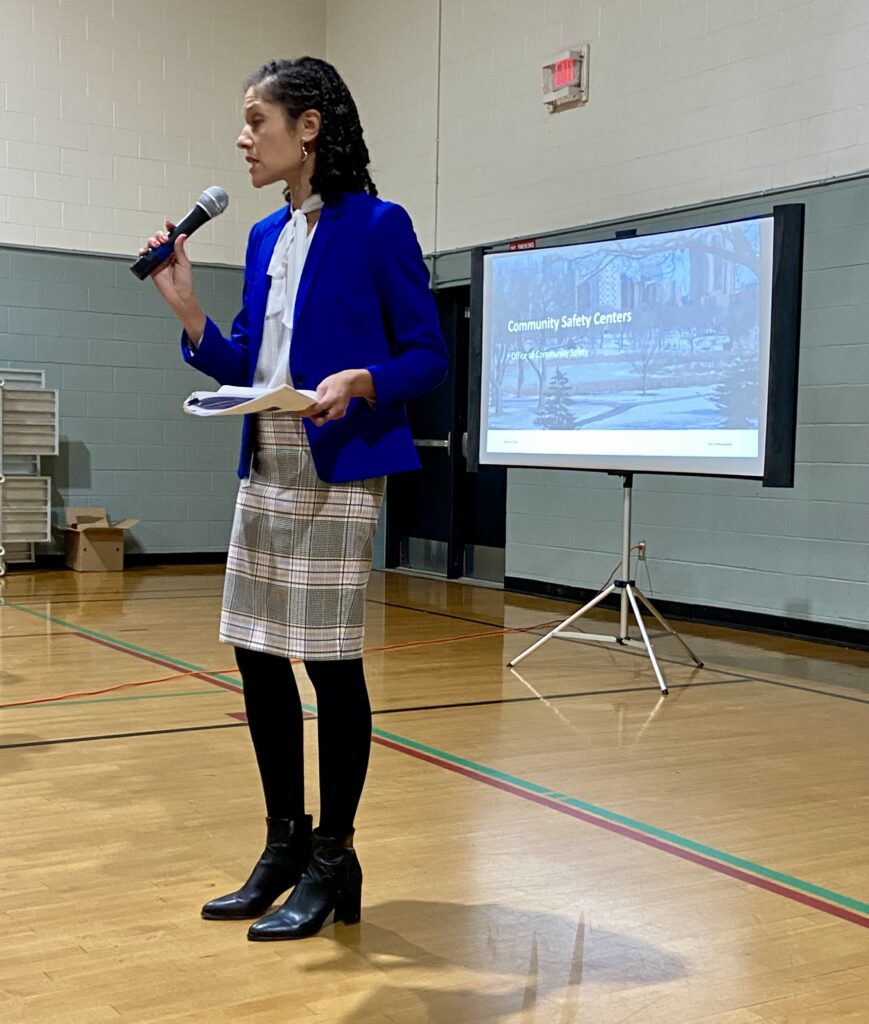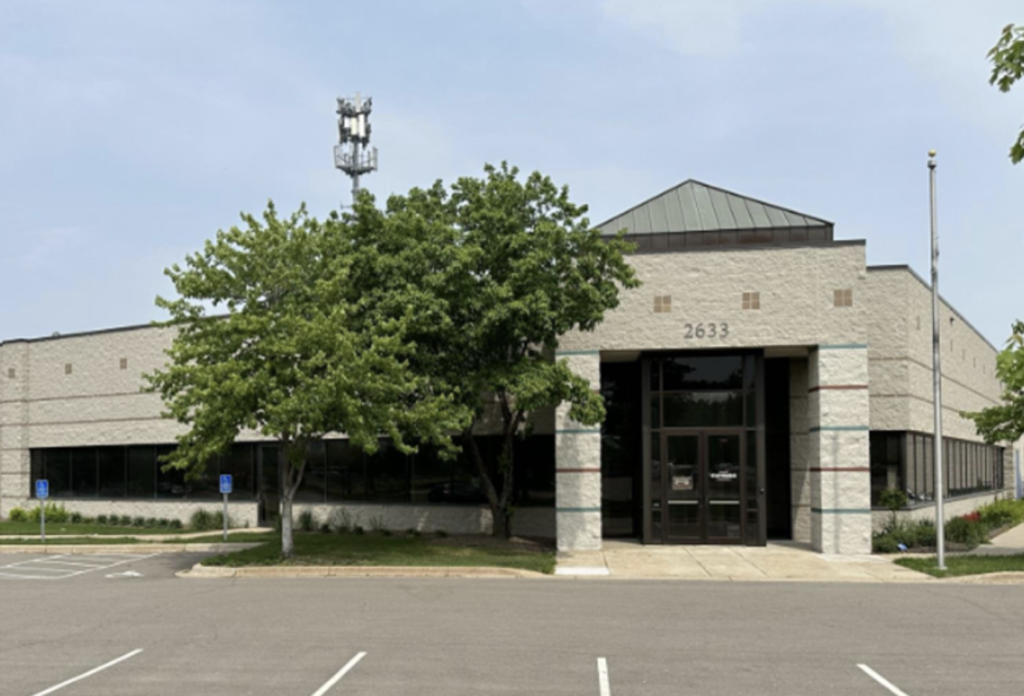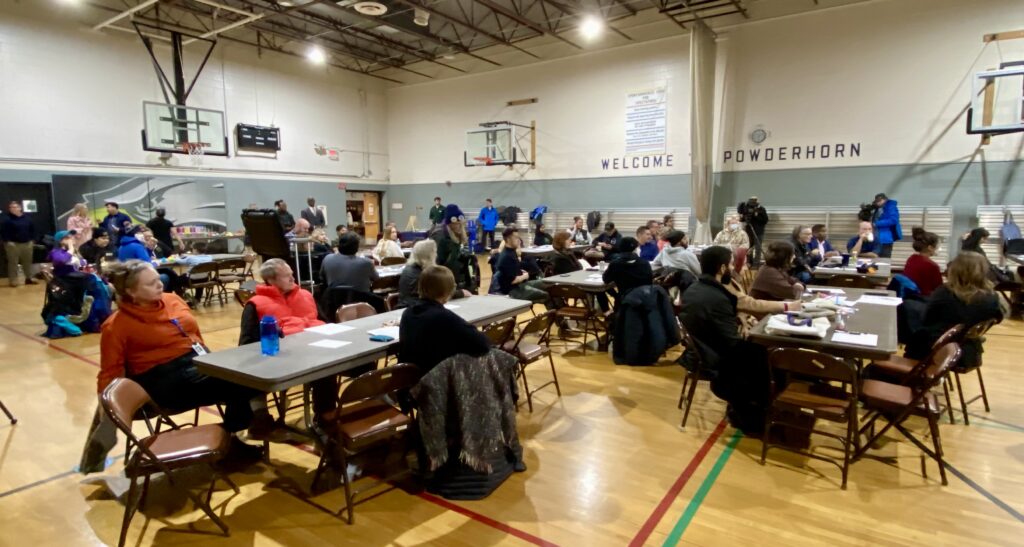News
Minneapolis Safety Center Update
On March 27th, the City of Minneapolis, with the assistance of LCC, held their first public engagement session focused on the future of two community safety centers. The first safety center, on East Lake Street would be a temporary center focused on social services, the second would be a permanent structure on Minnehaha housing both police and social services.
The City of Minneapolis Office of Community Safety presented the plans for both the East Lake Street Safety Center and the South Minneapolis Safety Center. Amanda Harrington, Director of Community Safety Design and Implementation, began the meeting with an acknowledgment of the community’s trauma around the 3rd Precinct and policing and an apology for the City’s dismissal of the community’s trauma.
The presentation provided a vision for the two community safety centers, but did not provide any concrete information on a location for East Lake Street, nor what services were going to be included at either safety center. Working from a list of social services and other services that have been provided to the City from previous community engagement sessions, community members were asked what services they would like to see in each location and what their priorities are.
About the Safety Centers
The Lake Street Community Safety Center is a project of the Public Health & Safety Committee. There is half a million dollars allocated to this project, which would bring safety services to East Lake Street between 35W and Hiawatha Ave.
This short-term project will offer a space for people to access some city services, provide resources to address safety and livability concerns along East Lake Street, and connect residents, businesses, and visitors to services while the City builds the permanent South Minneapolis Community Safety Center (2633 Minnehaha Ave.) The center is expected to open in late summer. A location has not been announced.
Despite the City’s effort to have this be an open conversation, the openness of the format was confusing for many in attendance – not having a definitive service idea (base for mobile units, walk-in services, flyers, etc.) was a barrier.
Several of the small group discussions talked about the services at East Lake Street being different from what would be in a precinct as many issues people would seek services for are criminalized. Many people said there isn’t a service they would feel safe going into a precinct for, but would feel safer going to an off-site location to access.
Community members were operating under the assumption that there wouldn’t be a police presence at the Lake Street Safety Center, however, a City official said that the Lake Street Community Center would likely be used by 3rd Precinct police officers for paperwork, a place to rest momentarily or other such uses.

Several of the small group discussions talked about the services at East Lake Street being different from what would be in a precinct as many issues people would seek services for are criminalized. Many people said there isn’t a service they would feel safe going into a precinct for, but would feel safer going to an off-site location to access.
Community members were operating under the assumption that there wouldn’t be a police presence at the Lake Street Safety Center, however, a City official said that the Lake Street Community Center would likely be used by 3rd Precinct police officers for paperwork, a place to rest momentarily or other such uses.
According to an interview with Kare11, Harrington said that there has been one confirmed service that will operate out of the Lake Street Safety Center one day a week. LEAD (Let Everyone Advance with Dignity) provides harm reduction-based, intensive case management to individuals who commit law violations due to unmet behavioral health needs, homelessness, and/or extreme poverty. It is rooted in a recognition that the criminal legal system as usual—booking, prosecuting, and jailing individuals committing offenses related to behavioral health needs—has had limited effectiveness in improving public safety.

The South Minneapolis Community Safety Center will operate as the Minneapolis Police Department’s Third Precinct with community services and resources. This engagement session is one of many the City plans to host to include the public in the decision-making process for these services. This safety center model would be the first of its kind in Minneapolis.
Putting a precinct and police back in the Third Precinct has been controversial, with many acknowledging that MPD has not put the effort toward reform as mandated by the DOJ’s investigation. There are currently working groups and administrative groups working on policing but the public doesn’t know who the people are that are making these decisions on behalf of constituents.
Conversations around social services with a police station varied. Many people did not think that these two could coexist because the people’s trust in the police is so degraded or nonexistent. Others wanted to see services that involved police officers like youth programs or services that could help aid reforming the police department like mental health treatment, de-escalation services and training, and more.
The public wanted more information about how these services will be decided beyond public input and how the City will measure their success. There was concern that the City would deem these services a failure, not because they aren’t needed, but because their proximity to police would be a barrier to access.
View the slideshow presentation here.
Learn more about the Office of Public Safety



